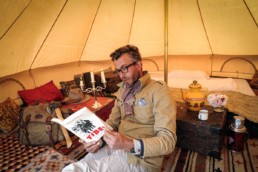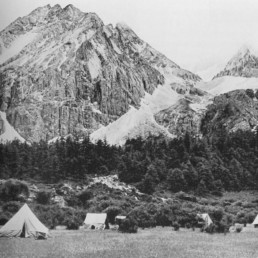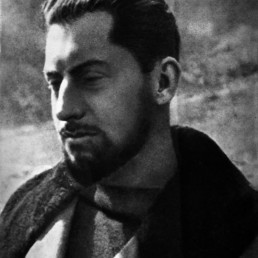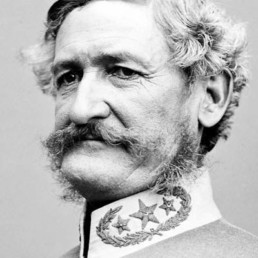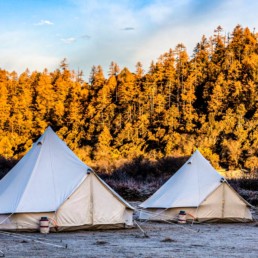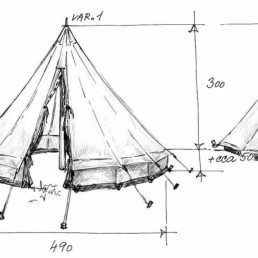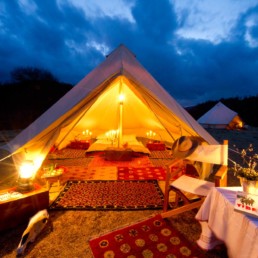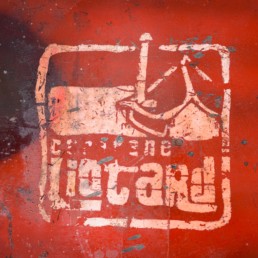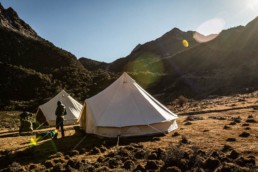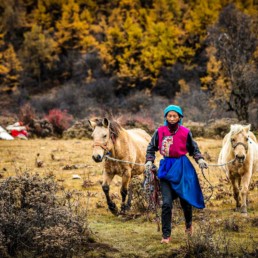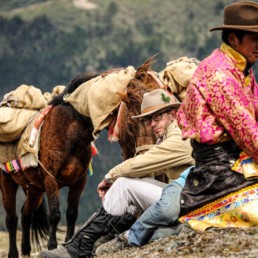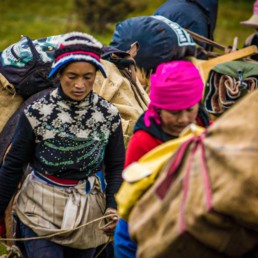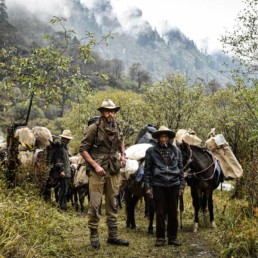the art of travel in Tibet
a story of caravans on the Tea Road
IN THE YEARS BEFORE THE GREAT WAR , Tibet unfolds explorers and adventurers of high class who cannot imagine traveling without a stewardship with which they could not be respected by the heads of local fiefdoms.
The Caravan Liotard follows in the footsteps of the explorers who risked their lives in countries hostile, but with style.
Travel Yes
but with style & elegance
THUS, when the Austro-American explorer Joseph Rock from the National Geographic travelled in the region, he carried an important stewardship loaded onto a caravan of twenty-six mules and seventeen men. He never went without his dishes, his library, his furniture including his bathtub! A type of expedition inspired by the Victorian era when it was good to go through land and sea in a tweed suit, and through jungles, deserts and mountains with crates of brandy. In these regions, as fascinating as inhospitable, caravans required henchmen, weapons, Tibetan mastiffs to defend themselves from robbers attacks. In 1940, the unfortunate Liotard was killed in an ambush on a Kham high pass.
Traveling is an art
magic of the camp
IN THE VEIN OF THESE EXPLORERS and others: Dutreuil Rhins, Bonvalot, Prince Henri d’Orleans, the commander d’Ollone, Bacot, Ward, Hedin, Przewalski … The Caravan Liotard wants to revive the elegance of these voyages of exploration: Bell tents, carpets, furniture, dishes, French wine, cooks … Voyager est un art ! A fairy camp to take the top spot of the most beautiful starry nights.
in memory of Louis Liotard
the explorer of Kham
MISSION LIOTARD is dedicated to the memory of Louis Liotard, the French explorer and geographer who, with his colleague André Guibaut, set on an exploration, in 1936 through 19040, of the Tibetan Marches, in order to map them out. In 1936-37, they moved up the Saluen, through the harsh Lissou country, were made prisoners for a whole winter in the Dimaluo valley, and sheltered by the Foreign Mission priests posted in Bahang Lu, with whom they lived for several months, sharing the hardship and solitude of their lives.
In 1940 they made their way to the inhospitable land of the Goloks, in the Sichuan, north of Kandig, where Liotard was killed during an ambush by Tibetan bandits. The tale of these expeditions was magnificently rendered by André Guibaut in his books Tibetan Venture and Ngolo-Setas.
The legendary tent Sibley Bell
the queen of tents on the Roof of the World
THE SIBLEY OR BELL TENT was designed by Henry Hopkins Sibley inspired by Indian tepees in North America. He patented his project in 1858 and was to receive $ 5 per tent made, but at the outbreak of the Civil War, he joined the army of the Confederate States, losing all of its rights. The Union Army manufactured more than 44,000 tents because of its functional and durable characteristics, while Sibley pursued a life of adventure. The legend was born !
The footsteps of Joseph Rock still haunt the landscapes crossed by the caravans
Joseph Rock our inspirer
The legendary bivouacs created by Caravane Liotard, with their furnished and spacious canvas tents, can't help but bring to mind explorers' campsites from a century ago, like those of Austrian-American botanist Joseph Francis Rock, who, working for the National Geographic, spent almost thirty years of his life in the Tibetan outback, his very own land of milk and honey.
Rock : the right man for the job
Austrian-born Joseph Rock emigrated to America in 1905, and became a citizen. A self-educated man, he taught himself botany, which, after an excursion through Siam, led him to these supremely remote regions of China. After that, to skim through his many achievements, he became among other things a journalist, photographer, doctor, ethnologist, cartographer, ornithologist, writer… He was fluent in Tibetan, Naxi and Chinese. Rock was “the right man for the job,” always at the right place at the right time. And when he moved with all his people, what an incredible caravan it was! In one of the photographs, he is pictured surrounded by “his twenty-six mules and seventeen men, accompanied by one hundred and ninety soldiers armed with rifles.” Rock explained: “you need to show what an important man you are in order to survive in this untamed world.”
What is the formidable charm of this strange country where all who had once glimpsed it have always returned ?
Camp & caravans
on the Tea Road
WHAT IS THE FORMIDABLE CHARM of this strange country where all who had once glimpsed it have always returned? We arrive in frozen deserts, so high that they no longer seem to belong to the earth; we climb fearsome mountains, chaos of black abysses and white peaks bathed in the absolute cold sky. Jacques Bacot, Tibet revolted.
Philosophy
To achieve and enjoy these landscapes where nature has never been tamed, the traditional caravan (mules, heavy tents, stewardship) remains the most appropriate way to do it.
Solid tents
The Bell tents have been designed to withstand sustained winds and the thickness of their canvas effectively isolates its guests from the harsh climate of the highlands, as demonstrated by their long career !
Cold-proof
Against the ravages of cold weather, the Caravan Liotard equips their tents with small wood stoves to overcome snow and icy nights at 4,000 meters.
On the Tea Road
The Caravan Liotard continues the muleteer tradition as practiced for centuries by the trading caravans of the Tea Road on the Tibetan footsteps from Yunnan to Sichuan and on the highlands on their way to Lhasa.

